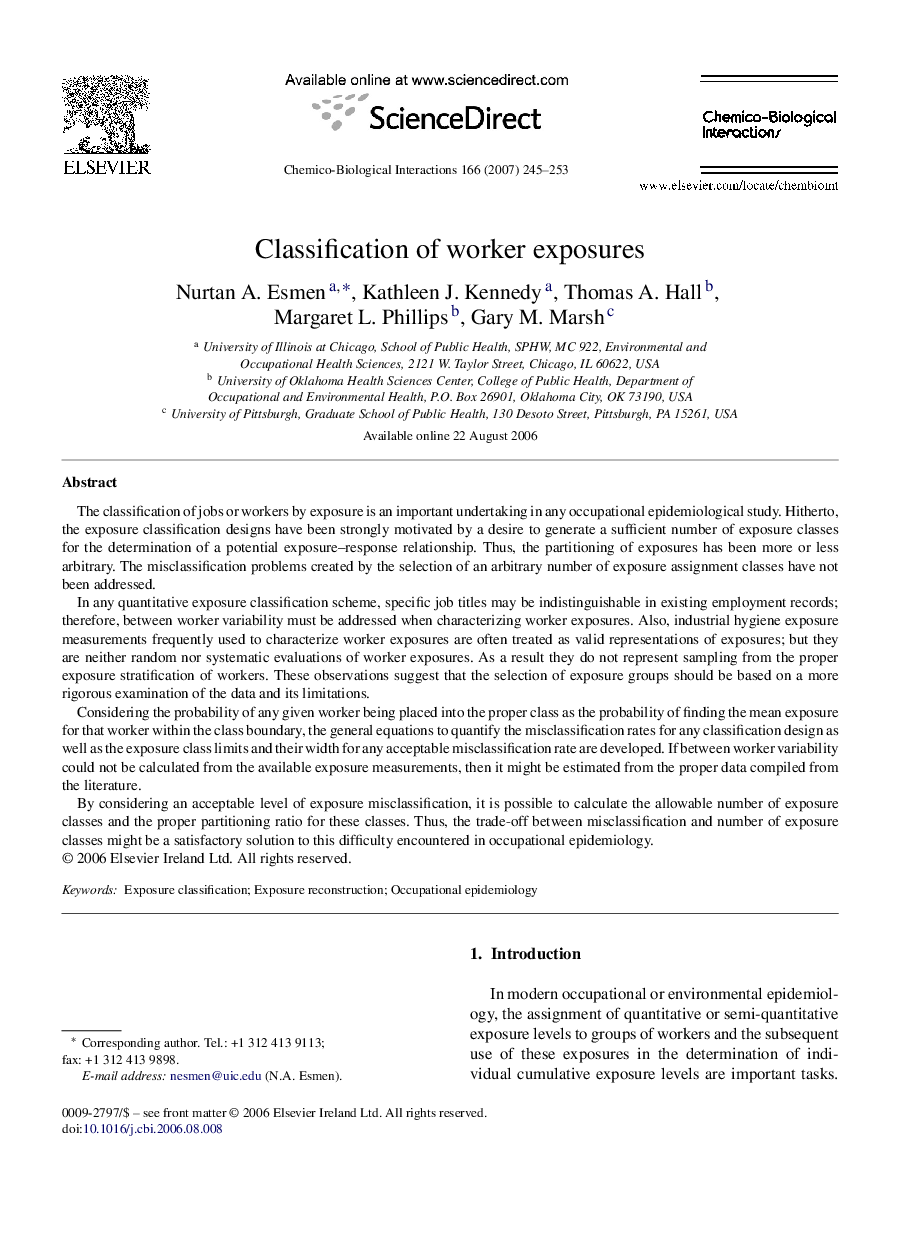| Article ID | Journal | Published Year | Pages | File Type |
|---|---|---|---|---|
| 2582070 | Chemico-Biological Interactions | 2007 | 9 Pages |
The classification of jobs or workers by exposure is an important undertaking in any occupational epidemiological study. Hitherto, the exposure classification designs have been strongly motivated by a desire to generate a sufficient number of exposure classes for the determination of a potential exposure–response relationship. Thus, the partitioning of exposures has been more or less arbitrary. The misclassification problems created by the selection of an arbitrary number of exposure assignment classes have not been addressed.In any quantitative exposure classification scheme, specific job titles may be indistinguishable in existing employment records; therefore, between worker variability must be addressed when characterizing worker exposures. Also, industrial hygiene exposure measurements frequently used to characterize worker exposures are often treated as valid representations of exposures; but they are neither random nor systematic evaluations of worker exposures. As a result they do not represent sampling from the proper exposure stratification of workers. These observations suggest that the selection of exposure groups should be based on a more rigorous examination of the data and its limitations.Considering the probability of any given worker being placed into the proper class as the probability of finding the mean exposure for that worker within the class boundary, the general equations to quantify the misclassification rates for any classification design as well as the exposure class limits and their width for any acceptable misclassification rate are developed. If between worker variability could not be calculated from the available exposure measurements, then it might be estimated from the proper data compiled from the literature.By considering an acceptable level of exposure misclassification, it is possible to calculate the allowable number of exposure classes and the proper partitioning ratio for these classes. Thus, the trade-off between misclassification and number of exposure classes might be a satisfactory solution to this difficulty encountered in occupational epidemiology.
